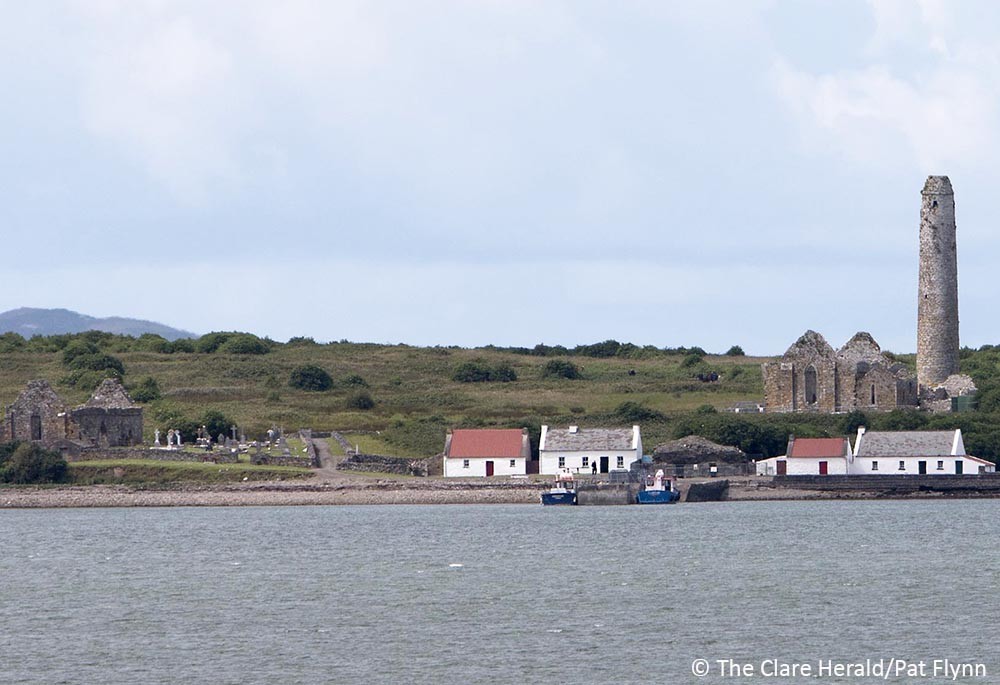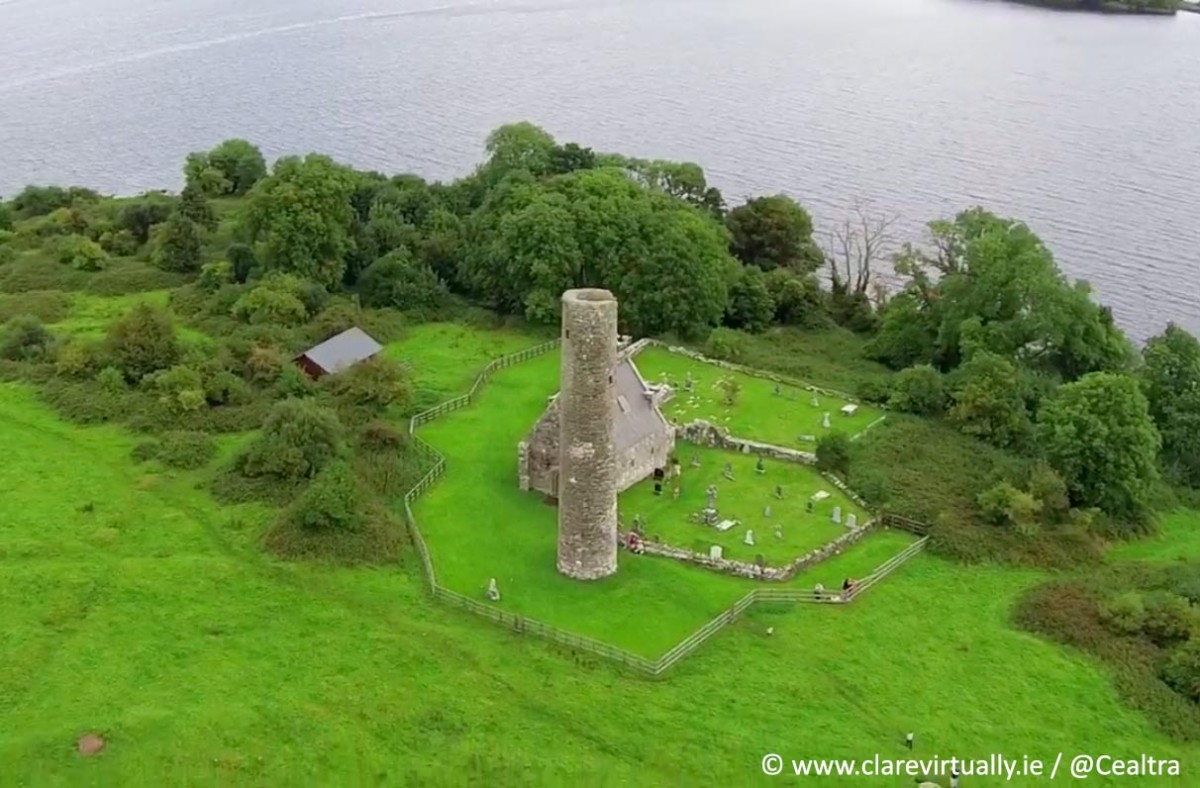
Clare Independent T.D. Michael McNamara is urging Clare County Council to submit applications for Inis Cealtra (Holy Island), Cahercommaun Ringfort and the Burren for inclusion on Ireland’s Tentative List for future World Heritage nominations to UNESCO and to explore submitting additional sites such as Scattery Island (Inis Cathaigh) and Mooghaun Hillfort.
The Department of Housing, Local Government and Heritage is currently undertaking a review of the Tentative List with Local Authorities invited to submit applications by 30 June 2021.
Holy Island was originally named on the UNESCO World Heritage Site Tentative List for Ireland as part of a group of early medieval monastic site along with Clonmacnoise, Durrow, Glendalough, Kells and Monasterboice in 2010. Cahercommaun was a one of a group of five Western Stone Forts on the List, along with Dun Aonghusa on Inishmore and Caherconree, Benagh and Staigue, all in Kerry.

“In 2014, I met with UNESCO representatives and learned that there had been little or no communication from the Irish government on the matter for some time and little effort had been made to advance the Irish tentative list since it was handed over in 2010,” explained Deputy McNamara.
He continued, “When I subsequently raised the matter with the then Minister for Culture, Heritage and the Gaeltacht in 2015, I was informed that Kerry County Council had informed the Department that it did not wish to be involved in progressing the potential Western Stone Forts nomination. This was also the case with Clonmacnoise, which had obvious implications both for the potential nomination of the site in its own right, as well as for its status as a crucial element of the potential nomination of the Early Medieval Monastic Sites group.
“Since then, successive governments have failed to progress the designation of this tentative list despite the fact that it would bring worldwide attention to our unique patrimony and to the natural and built heritage sites themselves. As well as a requirement to ensure any development is sympathetic to and protects the integrity of the sites, which may explain the reluctance of some, more cavalier local authorities, designation also typically results in an increase in tourism, with associated economic benefits,” added Deputy McNamara.
In response to a parliamentary question this week, Deputy McNamara was informed that a new tentative list is being developed by the National Monuments Service, with a June 30th deadline for applications from Local Authorities, State Bodies, community organisations and individuals, for sites or properties of natural and/or cultural heritage to be included.
“Given the increase in tourism typically generated by World Heritage site designation, and the unprecedented challenges that will face the domestic and international tourism sector when we open up to world again, every effort must be made to advance built and natural heritage sites across Ireland to the World Heritage list,” he stated.

Commenting on the application process, Deputy McNamara stated, “There is considerable work and time involved in the preparation of nomination documentation and a management plan for a location, including a public consultation process, but I believe the extensive public consultation that has already been undertaken locally in respect of all of the sites I would like to see proposed means they could be strong candidate for inclusion on the new list that is being compiled by the Department.”
According to the Clare T.D., “Acknowledging the difficulties experienced with progressing nominations, UNESCO introduced a so-called Upstream Process in 2010 enabling the Advisory Bodies and the Secretariat, which ultimately determine which sites make it to designated status, to provide advance support in the form of advice, consultation and analysis prior to the preparation or submission of a nomination. Instead of a top-down approach, the National Monuments Service should facilitate interested local authorities and community organisations to avail of this process before the next Tentative List is submitted.”
He added, “I would also ask that the local authority engage with the Upstream Process through the Department in respect of Scattery Island and Mooghaun and, perhaps, Canon Island and to engage with community interests to determine whether applications for these sites is feasible as an alternative to the current groupings whose designations have stalled due to lack of interest by other local authorities.”
Deputy McNamara pressed the Department to nominate Irish sites for World Heritage status during his first term as a T.D. (2011-2016) and remains critical of the Department’s lack of progress in increasing Ireland’s under-representation on the UNESCO world heritage site list. Ireland currently only has two sites on the UNESCO world heritage list, Skellig Michael and Newgrange.
“That is the same number as Afghanistan which have spent much of this century in internal strife and without and effective government. By comparison, Austria and Denmark both have ten world heritage sites, the latter having advanced five sites to designation in the past decade,” he said.

Deputy McNamara said Ireland’s efforts to green global historic sites such as the Sydney Opera House, the Leaning Tower of Pisa and the Pyramids of Giza for St Patrick’s Day is in marked contrast to “lacklustre efforts to win recognition for historic sites in our own country.”
He added, “Tourism Ireland’s Global Greening project comes about as a result of much effort and some cost to the State (€48,583 in 2019), but I accept that it results in a benefit, not limited to direct income, to our State. We have, however, neglected to progress various sites in Ireland to UNESCO world heritage status over the past decade.”
